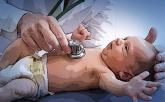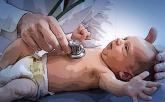Article

Case Studies in Toxicology: Death and Taxus
- Author:
- Vince Nguyen, MD
- Lewis Nelson, MD
Article

Neonatal Seizure: Sepsis or Toxic Syndrome?
- Author:
- Larissa Laskowski, DO
- Lewis Nelson, MD
A mother presents to the ED with her 4-day-old daughter after observing abnormal jerking movements of the neonate’s upper extremities.
Article

Case Studies in Toxicology
Neonatal Seizure: Sepsis or Toxic Syndrome?
- Author:
- Larissa Laskowski, DO
- Lewis Nelson, MD
A mother presents to the ED with her 4-day-old daughter after observing abnormal jerking movements of the neonate’s upper extremities.
